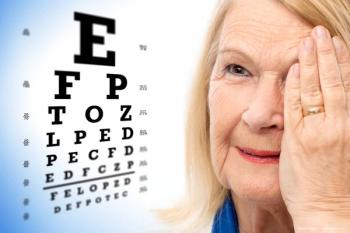
Treating wet AMD with radiation
A single procedure may be as effective as repeated anti-VEGF injections claims Timothy L. Jackson.
Key Points
Choroidal neovascularization (CNV) is a result of over-expression of vascular endothelial growth factor, recruitment of inflammatory cells, and fibroblasts. Radiation is known preferentially to damage proliferating endothelial cells. Epimacular brachytherapy is an AMD therapy that utilizes a novel surgical device to deliver targeted beta radiation to active AMD lesions. Unlike anti-VEGF agents, radiation is thought to eliminate CNV vessels permanently, rather than simply suppress them. For this reason, the device offers the prospect of a one-off operation, rather than a lifetime of intravitreal injections entailing considerable expense, patient inconvenience, and a small but cumulative risk of complications.
Early studies of radiation
Successive attempts to provide a more focal delivery under the retina had only limited success, as the very process of accessing the subretinal space caused damage. By contrast, epimacular brachytherapy - which involves the delivery of beta radiation via a vitrectomy procedure - has the potential to provide a highly targeted delivery of beta radiation without surgical damage to the retina.
Details of the procedure
The device consists of a hand piece with a 20-gauge cannula, within which resides a retractable radiation source (the radioactive isotope strontium-90).
Newsletter
Get the essential updates shaping the future of pharma manufacturing and compliance—subscribe today to Pharmaceutical Technology and never miss a breakthrough.















































